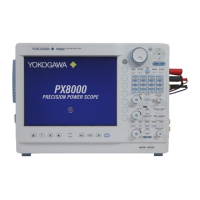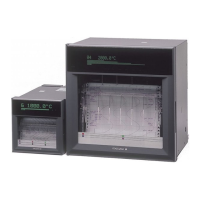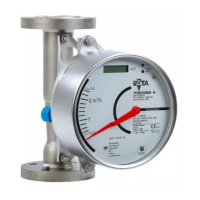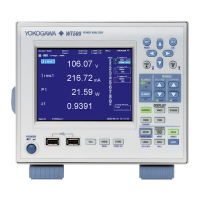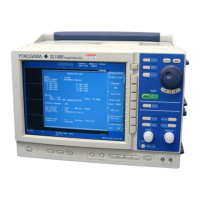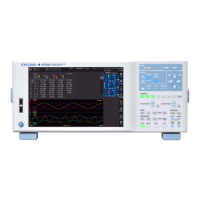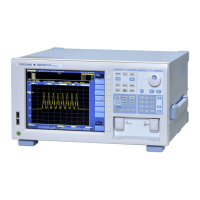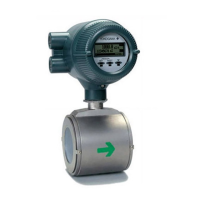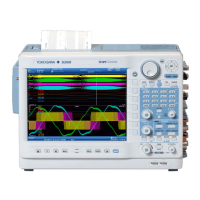<Appendix 3 For ISC (Inductive Conductivity)>
App.3-9
IM 12A01A02-01E 8th Edition : Oct. 01, 2015-00
n Temperature compensation error
The temperature compensation error (alarm) is issued in any of the following cases.
l TC
The error is issued when:
(measured temperature – reference temperature) < –90/compensation coefcient
The default of the temperature compensation coefcient is 2.10%/°C.
For example, when the reference temperature is 25°C, the temperature compensation coefcient
is 2.10%/°C and the measured temperature is lower than –17.9°C, the error will be issued.
Temperature compensation is performed even while an alarm is being issued.
l Matrix
The error is issued when the temperature or the precompensated conductivity is out of the range
of the temperature compensation matrix.
In this case, however, the temperature compensation is performed by extrapolation even while
an alarm is being issued.
l All
When the conductivity is around zero, the temperature compensation error may be issued. In this
case, the temperature compensation is not performed, and the precompensated conductivity is
displayed.
Whether the conductivity is around zero or not is determined by the temperature and conductivity
of solutions. For example, when the temperature is 20°C and the conductivity is lower than 0.033
μS/cm, the conductivity is determined to be around zero.
When measuring the conductivity around zero in air calibration or when the conductivity to be
measured is around zero, an alarm may be issued.
NOTE
To display the precompensated conductivity, set the Method to “None”.
Select Measurement setup → Temp. compensation.
n Calibration solutions for conductivity
The calibration (cell constant) of a sensor does not change unless the sensor is damaged.
It can also appear to change because of coating of the electrodes, or partial blockage.
It does not make sense to regularly recalibrate the FLXA202/FLXA21.
A calibration check, however, is another matter. When the objective is clearly dened as a
diagnostic exercise a regular check can bring an extra level of security and condence to the
measurement.
Sensor damage, and/or coatings can be difcult to see and the calibration check can conrm
their presence, by a deviation from the known solution conductivity. The remedial action should
be to clean the sensor, and carefully check for blockage or damage (not simply to recalibrate).
Higher conductivity solutions should be used where possible. The lower the conductivity of the
test solution, the easier it is to contaminate. Carbon dioxide from the air can be quickly absorbed
to cause an error. All containers must be suitably clean, and all materials suitably pure. Outside of
a well-equipped laboratory these conditions are hard to meet.
App.
ISC

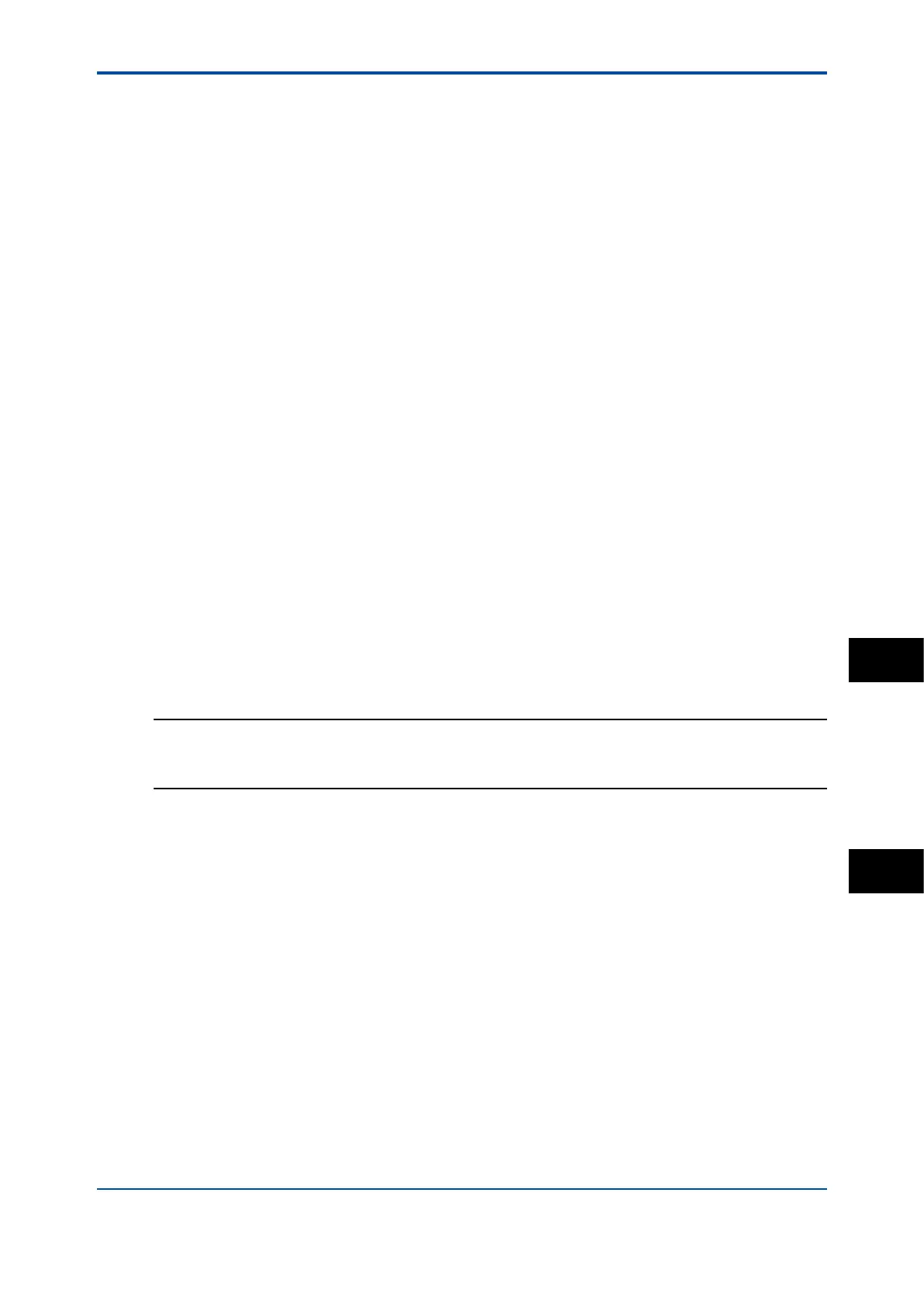